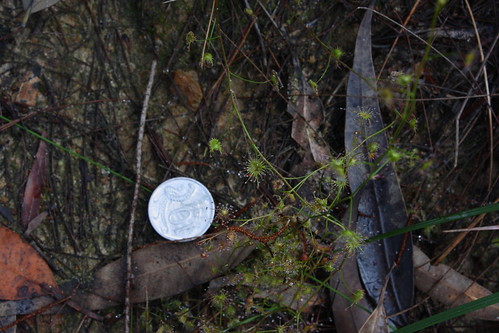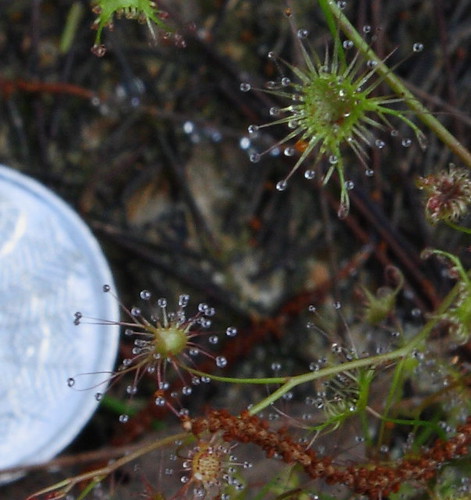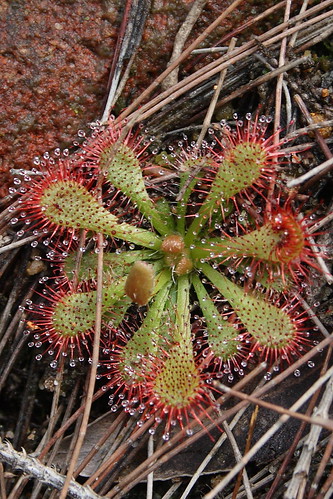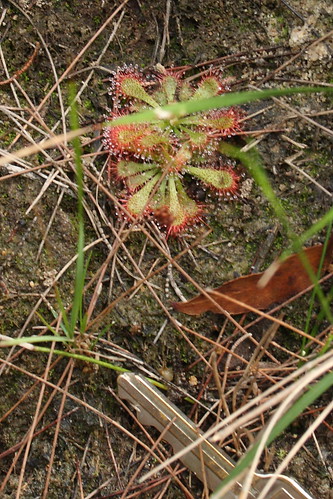Drosera peltata
“stalked semicircular leaves on a slim stem to about 20cm high” NPOS p. 163
Funny how you can pass something a hundred times and never notice it. A few of these pale sundews were growing in exactly the same spot as a bunch of common sundews I’d known about and been passing for months.
Just like the common sundew the pale sundew grows on damp clay or sandy soil and makes up for poor nutrients by capturing small insects with sticky fluid excreted from it’s leaves.
You can see by the 10c coin that they are small, and there’s not much bulk to them so easy to miss I suppose.


Resources and references




